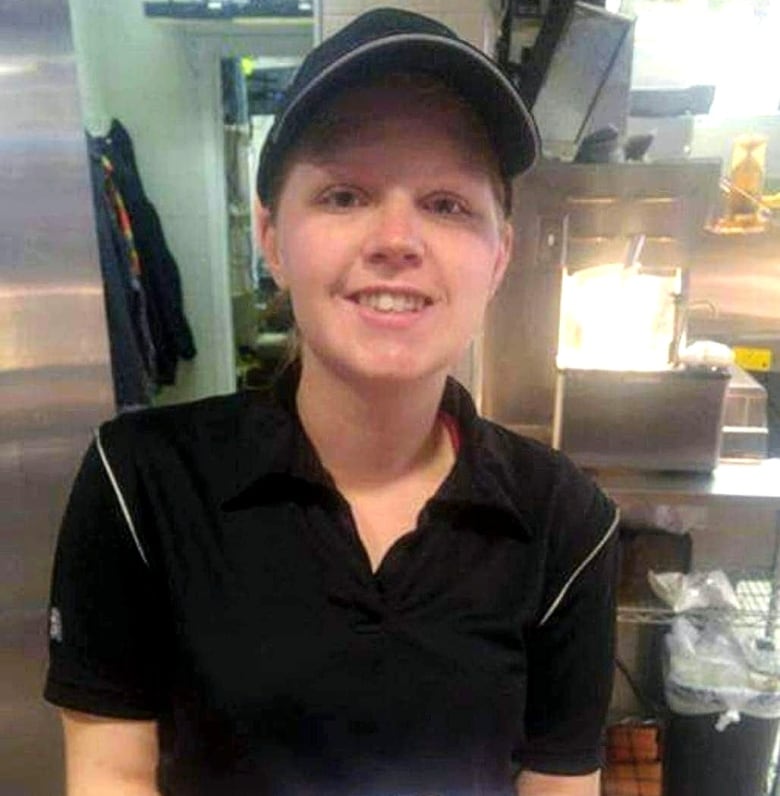Drive-thru or order inside: What’s the quickest way to get your fast food? | CBC Radio
When Stephanie Hungerford doesn’t have the time or energy to cook dinner for her family, she’ll sometimes pick up McDonald’s or Wendy’s on her way home from the office.
But when the Vancouver mom pulls into one of those fast food restaurants, she says she’s often faced with a difficult decision.
“Should I do the drive-thru or go inside? Like, which is actually faster? Because sometimes there’s a lot of cars lined up at the drive-thru. And also, if the drive-thru is faster, I’d like to know why.”
The Cost of Living team tackled this question for Hungerford, and every Canadian who has ever found themselves on the road, in a rush and…well…hangry.
‘Race against the clock’
Becca Robb can’t remember a job where she ran around as much as she did when she worked at a McDonald’s in Calgary from 2014 to 2020.
“It’s literally all hands on deck.”
While bagging burgers and fries, Robb says she had to keep her eyes glued to a countdown clock on the wall that tracked how long customers had been waiting on their food.
And the priorities were clear. Dine-in orders had to be served in two and a half minutes, while meals destined for the drive-thru needed to be ready when the driver pulled up the second window.
“That sandwich is out in 30 seconds,” Robb says.

Former A&W employee Alicia Scanland says staff were expected to have orders out to restaurant patrons in three minutes and drive-thru customers in under a minute.
“It’s a race against the clock.”
McDonald’s, A&W or Wendy’s Canada did not respond to CBC’s request for information about drive-thru versus dine-in speed, however, a spokesperson for Starbucks Coffee Canada did provide an email statement saying the company’s “priority is to provide the best Starbucks experience no matter where our customers find us.”

Both Scandland and Robb say their former employers always allocated more staff to serve hungry drivers — especially during the breakfast, lunch and dinner rush.
“Have you noticed, like, when you do walk into McDonald’s now, there’s not very many people on a till to actually take your order?” Robbs says. “They have people that are on that front till, but helping the drive-thru.”
Staff were also rewarded with free meals for hustling orders out at lightning speed, says Robb. On a wall behind the counter, there was a digital board that ranked all the local McDonald’s drive-thrus from fastest to slowest.
Scanland says a representative from A&W’s corporate office, who would audit and grade speed of service, visited the Calgary franchise she worked at annually.
“We’re taught that drive-thru is top priority because the people inside have a little more patience than out in the car.”
Cost of Living5:25What’s the fastest way to get your fast food?
You’re late for work, but you’re starving. So you pull into fast food restaurant, but there’s 12 cars lined up for the drive-thru. Do you wait in line or run inside to order? Which is faster? And why?
In the world of fast food, drive-thru is king
Drive-thru customers are “notoriously fickle,” says Robert Carter, a restaurant industry expert with The StratonHunter Group.
“If you have a bad experience in the drive-thru a couple of times, you’ve lost that customer and they’re going to go to the next drive-thru because they’re really being driven by that convenience factor.”
Drive-thru customers are not as loyal as dine-in customers, says Carter, and fast food chains fight tooth and nail for that market share.
“So it’s important that they make sure that the drive-thru experience is quick and that it’s a good experience.”

Then, there’s the matter of optics.
If the drive-thru gets behind, the lineup will snake onto the street blocking traffic and vehicles will just sit there, idling.
Carter says fast food chains don’t want to be seen as polluters, which is another reason why they put more resources into moving those cars along.
“These restaurant chains are very cognizant of the environmental impact.”
More money, more power
Finally, Carter says fast food restaurants put greater value on drive-thru customers because they typically spend more money than customers who dine-in.
“You may have families doing multiple orders, you may have somebody picking stuff up for people at the office,” he says. “So it’s a more profitable area of the business overall.”
According to retail market research firm NPD, a far higher number of customers eat their meals off premise than on premise.
The latest data shows delivery apps, curbside pickup and drive-thru made up 72.7 per cent of all Canadian quick service restaurant orders between March 2022 and February 2023.

For all the latest business News Click Here

